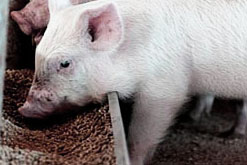Phytase interaction when choosing non-phytase feed enzymes

With phytases included in around 90% of all monogastric feed, it is vitally important end-users consider potential interactions with any non-starch polysaccharide (NSP)-degrading enzymes or proteases before adding them to the mix, claims AB Vista’s Research Director, Dr Mike Bedford.
“The challenge is that somewhere in the region of 80% of all published research trials on NSP-degrading enzymes and proteases have been done in the absence of a phytase,” he states. “It means that the vast majority of the research simply does not accurately reflect the current commercial norm.
“Recent data generated by AB Vista has shown that even under ideal conditions – when both the phytase and NSP-degrading enzyme are optimised for efficacy within the animal – the benefits of combining both enzyme classes are sub-additive.”
According to Dr Bedford, there is a risk that many end-users are overestimating the likely effects of adding a second enzyme class, and that there is currently no clear evidence for any additional gain from a third.
“We have the research to show a significant benefit from using a well-targeted NSP-degrading enzyme alongside a phytase, and though sufficient to provide a worthwhile return on investment, it is not strictly additive,” he adds.
“If either enzyme is sub-optimal in terms of efficacy, the level of benefit could well drop below the point where it is economically viable,” Dr Bedford highlights. “With most non-phytase enzymes on the market not supported by research that includes use of a phytase, the chances are that a considerable proportion of the US$500 million spent annually on NSP-degrading enzymes and proteases is not producing the expected return.”











